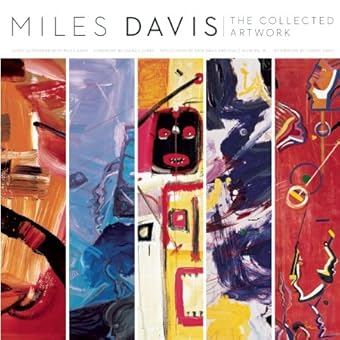Making Sure Miles Stays Forever Young
By LARRY ROHTER
Published: November 10, 2013
LOS ANGELES — Miles Davis died here more than 20 years ago, but in some ways he remains as much a presence as ever, and not just because recordings continue to be issued under his name. A book of his paintings and drawings was published last week, a biopic about him is in the works, a stamp with his image circulates, and a museum exhibition devoted to his life is traveling the world.
Don Hunstein
Miles Davis and his music are being promoted beyond reissued albums.
Connect With Us on Twitter
Follow@nytimesarts for arts and entertainment news.
A sortable calendar of noteworthy cultural events in the New York region, selected by Times critics.
Monica Almeida/The New York Times
Miles Davis’s estate managers: from left, his nephew, Vince Wilburn Jr.; his daughter, Cheryl Davis; and his son Erin Davis.
Overseeing those initiatives, and others, are his three heirs: his son Erin, his daughter, Cheryl, and their cousin Vince Wilburn Jr. Like those who manage the estates of Jimi Hendrix, Bob Marley or John Coltrane, they are grappling with a complicated challenge: How do you keep this trumpeter, an archetype of 20th-century popular music, in the public eye and maintain his brand, even as his original core audience is aging?
“We’re talking to everybody, because we’re involved in growing and promoting and exposure,” Erin Davis said during a long joint interview late last month at the office of the heirs’ publicists here. “It’s taken me 20 years to realize what we’re doing and how it affects the future.”
The heirs confront a paradox: With more than four million copies sold in the United States alone, Davis’s 1959 album “Kind of Blue” is the most popular jazz record of all time. But the rest of his catalog, which includes historic recordings like “Birth of the Cool” and “Bitches Brew” and covers a gamut of styles from hard bop to fusion and funk, is not as familiar to the public.
Davis left behind an enormous body of work: In a recording career spanning nearly 50 years, he made well over 100 albums. The release of a limited-edition 70-CD boxed set in 2009 was followed two years later by a 20-CD box with miniature sleeves that mimic the original LPs. On Monday, a set of remastered mono versions of the first nine albums Davis recorded for Columbia Records, now a part of Sony, is being issued.
But there is much more in Columbia’s vaults, in the archives of television and radio networks in countries where Davis toured, and in the family’s own collection. (Davis recorded all his shows and rehearsals once the technology became available.) The heirs, however, talk of the need to exercise restraint, to avoid the risk of diluting the value of the Davis name.
“We don’t want to rehash or saturate the market with ‘Oh, here’s another Miles record,’ ” said Mr. Wilburn, who played drums in his uncle’s ensembles in the 1980s and now leads his own band. “We don’t put things out just for the sake of putting things out. This is really thought out, from a blueprint.”
Many of the releases in recent years, including Monday’s, seem aimed at completists and other longtime fans. The bigger test is the casual listener, especially a new generation that may be only vaguely aware of Davis.
“Lots of young people have heard of Miles Davis and make some association with his name, even if it’s just ‘Oh, he’s cool,’ ” said Adam Block, the president of Sony’s Legacy label, which handles the reissues. “Our job is to find ways to tell stories that validate those feelings and educate those with some interest in his music.”
He added: “There’s a need not just to refresh memories, but a desire to create new ones.”
In recent years, Davis’s heirs have stepped up their efforts to take his music to audiences at events like the indie-oriented CMJ Music Marathon in New York. At last year’s SXSW music festival in Austin, Tex., they even sponsored the Miles Davis House, described as a “genre-bending odyssey” featuring rock and pop bands that professed an affinity to his music.
“I always want the next generation to know about Miles,” Erin Davis said. “Some people figure it out for themselves. But with others, you have to show them something, and they come to it.”
The museum exhibition, called “We Want Miles,” is an expression of the same impulse. Though it has not yet toured the United States, it has been shown in France, Canada and Brazil. Cheryl Davis described the multimedia retrospective as a “comprehensive walk through his life, with trumpets, pictures, people speaking about him, and original manuscripts and sheet music.”
As part of their outreach to a younger audience, the Davis heirs have also been pursuing collaborations with hip-hop artists. Mr. Wilburn mentioned overtures to Questlove of the Roots, Pharcyde and Nas, but also said that “it’s got to be tastefully done, because people have played the samples for us, and if it’s derogatory towards women or people of color, we’re not about that.
- 1
- 2





1 commentaire:
I really liked your Information. Keep up the good work. Top travel photographers
Enregistrer un commentaire